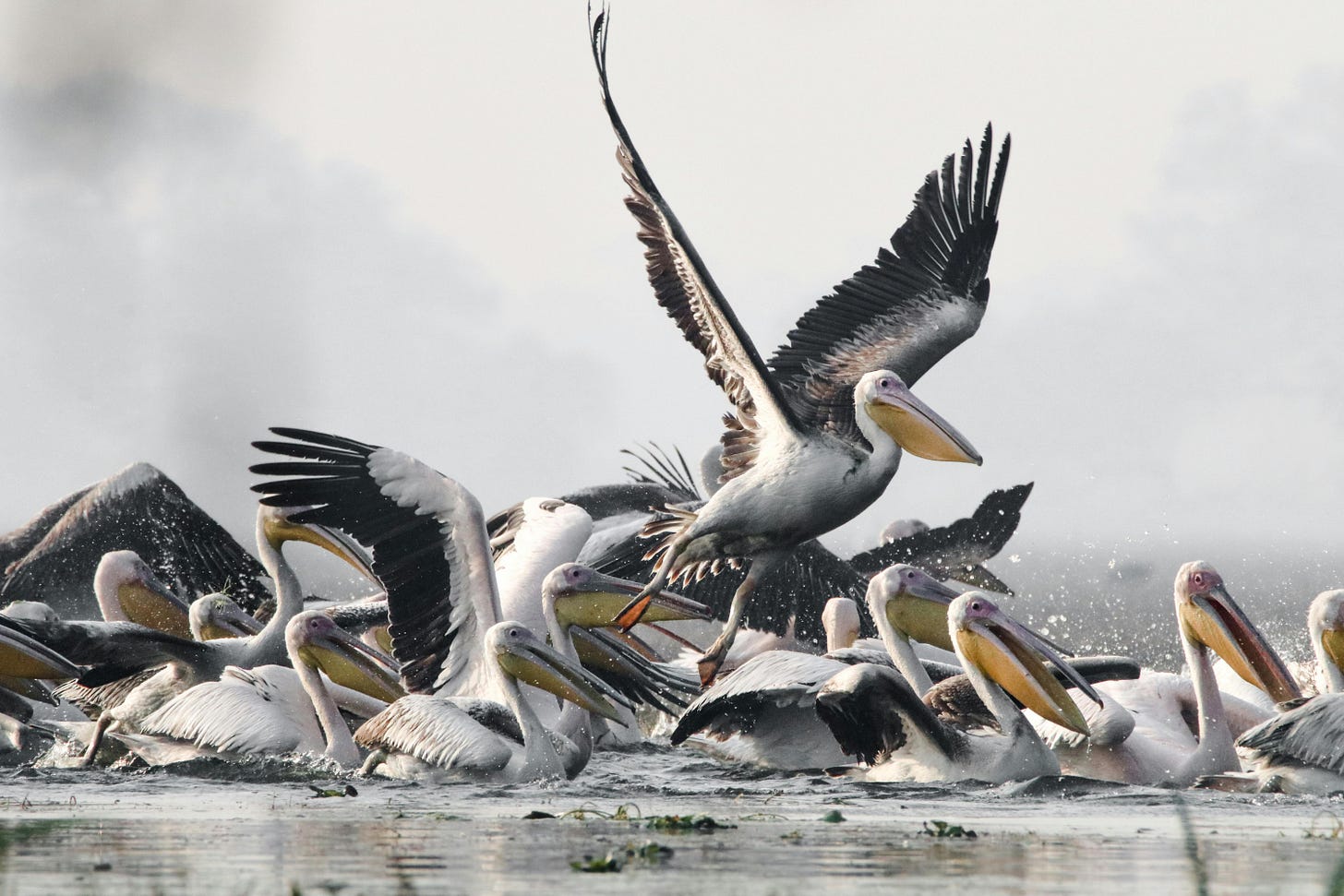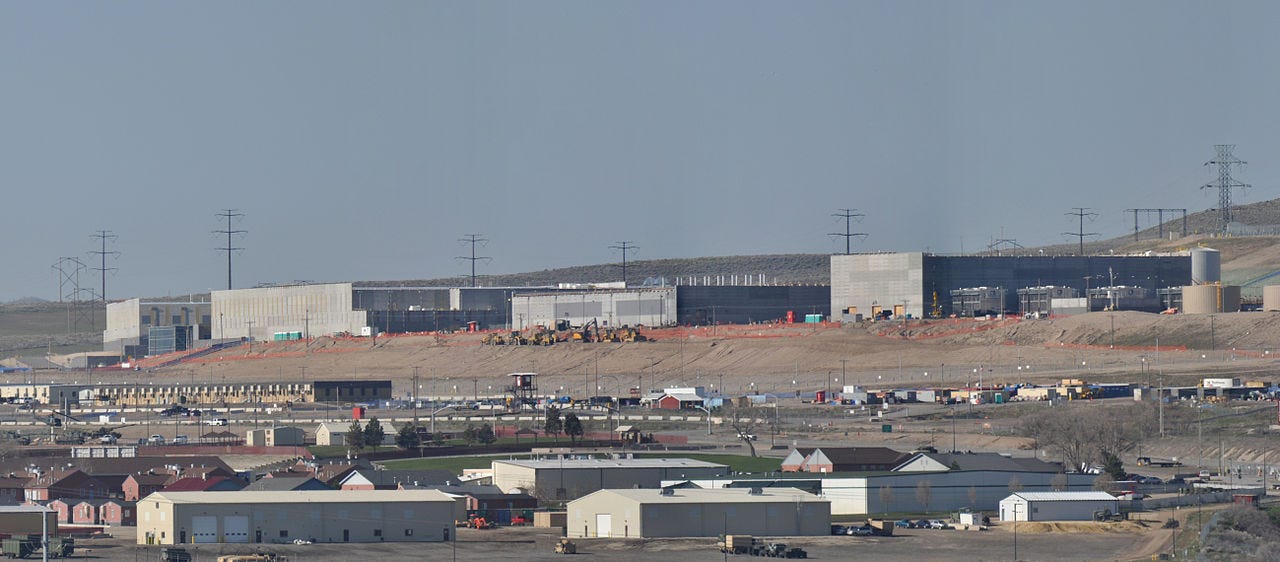Dear friends,
This month marks the second anniversary of The Window. In that time, a great deal has changed, but my core intention has not.
I am just one person, but I feel an at-times absurd tug of responsibility when I think about the climate crisis. I feel other things too—fear, disbelief, and profound frustration at our current political moment—but I can’t shake the sense that I must do whatever I can.
I can cut out most meat, drive less, fly much less, and wear the same super thick LL Bean sweater from the 80s for 6 months at a time instead of cranking up the heat. I can grow my own food, work to curb my consumption, and use a clothesline. But my own choices will only go so far. So I spend time tracking, digesting, and explaining climate policy at the state and federal level. And I try, in writing and through my actions, to support other people in my life who feel some of that same aching sense of responsibility.
I admit I also do a lot of hand-wringing about how the broader groups I belong to— people in the global north/developed world, Bay Area residents, white women in the middle class — are still, despite a great deal of knowledge, mostly still making the problem worse.
The downside of trying to do better in public is that people you know anticipate all the ways you might judge them if they don’t do the same. And many will turn away from you in anticipation of that judgement.
Lately, I’ve noticed myself spending a lot of time trying to reassure people that I’m not actually judging them for the many systemic Gordian knots in which they might wittingly or unwittingly be participating.
Take the choice to drive a Tesla—something that will simultaneously cut down on greenhouse gas emissions and support Elon Musk, whose xAI, is poisoning communities in Memphis’s Black neighborhoods with its data center, among many other destructive things.
I want more people to understand what Musk is doing, and what the trade-offs are, but I’m just not interested in telling anyone what to drive.
And when I do find myself judging other people’s choice not to spend more of their time actively thinking about the climate crisis, planning ways to help avoid worst case scenarios, and living accordingly, it’s in part because I know the window of opportunity to prevent the worst case climate scenario—the very window after which I named this newsletter two years ago—has already shrunk considerably in size.
There’s a collective sense on the part of so many informed people that we’ve already reached many key tipping points, and that it really is getting existential for the human race, as well as for so many of our most beloved plant and animal relatives.
I want so badly to feel part of a larger effort to move swiftly to enact the solutions that we know exist. I want to hold one small corner of the parachute and lift it up so that it puffs up with air.



I want to trust and be trusted. And I want to be able to say, “we can do better” if and when that’s true. I want you to say it too. I want to have expectations and know that the people around me will work to meet them. And that we’ll all grant one another grace when we can’t.
Somatic healer, teacher, and author Prentis Hemphill talks about “feeling what is yours to feel”—no more, no less. And I believe that sentiment also applies to the climate crisis. It takes work, and dedication, to find out exactly which part is yours to take on.
And it’s guaranteed to feel unwieldy; we will wince at the weight and put it down to rest sometimes. But there’s also something surprisingly freeing about getting to know the true weight of it. I’d wager it feels like the opposite of judging, and of being judged.
Climate news you might have missed
Beautiful bill = an ugly death for thousands of renewable energy projects
Donald Trump’s “big, beautiful budget bill,” which passed through the House Budget Committee on Sunday night, would do the lion’s share of the administration’s dirty work when it comes to stymying climate action. The bill would allow lawmakers to punt on regulating potent methane emissions from oil and gas facilities for another ten years and allow gas pipeline developers to bypass the permitting process for a fee. But perhaps the most damaging thing it threatens to do is kill the tax credits created under the Inflation Reduction Act designed to spur renewable energy production.
Since the IRA passed in 2022, companies have invested an estimated $320 billion in manufacturing, with a focus on technology such as batteries, solar panels, and wind turbines and they have created thousands of jobs, largely in red states. But over $500 billion still has yet to be spent. In the first quarter of 2025 alone, new projects totaled over $41 billion, but that number will drop precipitously if the IRA tax credits disappear, setting renewable energy growth back years, if not decades.
As Michael Thomas pointed out in his newsletter, Distilled, clean energy projects in some states are at much higher risk of disappearing than others. In California, where projects must typically go through a rigorous environmental review, taking an average of 10 years, that spells trouble. Here, “hundreds of projects are expected to come online after 2028, the year the tax credits are set to phase down. These projects have a combined capacity of 85 GW—enough to power tens of millions of homes.” Now, most of those are at risk. In Texas, where developers have very few hoops to jump through, it’s a very mixed bag for the environment. (Despite the bad rap California’s Environmental Quality Act or CEQA has been getting lately, it provides key protections to marginalized communities.) On the flip side, renewables projects in Texas now have a much better shot at coming online in the next few years.
The coming wave of inland migration
People have long chosen to migrate around this country—for like-minded communities, for better lives, and for survival. And many have had to migrate away from their native lands against their will. The next few decades will likely bring a new, less familiar, less predictable form of migration, as people move away from the coasts.
The scientists behind a new study found that even if we are somehow able to stop warming at 1.5C degrees (a threshold we’re very close to passing), the ocean will still rise by several meters. This is not in the distant future, either. Conservative estimates suggest that the oceans will rise by nearly 8 inches in the next 25 years and when tides rise and storms hit, many more places will flood than we’re seeing today.While most coastal cities are beginning to plan for some change, it’s now clear that they won’t be hospitable to nearly as many people going forward.
“Managed retreat” is the term used for coordinated migration away from places that have become unstable due to climate extremes. In recent years whole communities have been moved for other reasons—land subsistence, changes to geography, the removal of dams, etc. In some cases, cities and counties have even paid to move their most iconic buildings!Low-lying coastal places like Bangladesh and the Pacific Islands are at the most immediate risk, and communities in the developing world are struggling to plan for the shift. Here in the continental US, Florida will likely be the place most impacted first.
It’s a big change that I struggle to wrap my brain around as a person who has lived near the coasts for most of my life. But I have found some solace in the fact that many of the smartest approaches to adapting to sea-level rise involve bringing back natural habitats like mangroves, marshes and other wetlands—to coastlines where they have often been replaced by human infrastructure.
Data centers in the desert
There has been a lot of powerful, detailed reporting on the growth in the number and size of the data centers that are powering—or anticipated to power—artificial intelligence and cryptocurrency “mining” recently. But I‘m finding many of the stories incredibly difficult to read because of 1) the scale of destruction their water and energy use is already causing in communities and ecosystems and 2) just how locked into the near future they already seem to be, regardless of the “demand” for the products and services they support.
This week, The MIT Technology Review published a story focused on the data center “boom” in the high desert east of Reno Nevada—a beautiful but less known part of the West. Temple found that nearly a dozen different companies, including Google, Apple, and Microsoft, are operating, expanding, and building data centers, including in a business park whose size is “the equivalent of almost five Empire State Buildings laid out flat.” The land in the region is affordable, Nevada is providing tax breaks, and building enormous architectural behemoths there is relatively easy, but what’s most alarming is the fact that this boom is driving water policy in the region, which has suffered from drought for most of the last decade.
Meanwhile, the investment company Blackstone made an $11.5 billion deal with TXNM, a large energy provider in the Southwest, to generate power for new and existing data centers in New Mexico and Texas. (Albuquerque is already home to 17 large data centers!) It’s the biggest investment of its kind, and it’s not at all clear how much, if any, of the energy they generate will be renewable. But what it illustrates is that there’s serious money riding on the future of AI, and the water that does exist in these arid places will increasingly cool servers instead of making it to people, farms, or ecosystems.
On the brighter side
1. Despite the fact that the Trump Administration has moved to open 500,000 square miles of marine protected areas, California may expand the network of areas protected by the state.
2. The decorative mending trend is gathering speed, offering a growing alternative to fast fashion. The latest Washington Post piece on the topic asks: Is it a good or bad sign that you can buy jeans online with imitation sashiko mending for over $1,000?
3. A local law in The Hague, in the Netherlands banning fossil fuel advertising withstood its first legal challenge.
4. Greenhouse gas emissions in China might actually have peaked, thanks to the way they have invested in scaling up renewables. It sounds like they might just be doing a better job of “securing their energy dominance” than we are.
5. Speaking of the (unabashedly greener) grass on the other side of the world, a growing number of companies in Europe appear to be lobbying for “strong climate action” rather than against it.
6. One-third of cars sold in the European Union are now electric.
7. In Switzerland a start-up has been installing solar panels between train tracks, i.e. on land that doesn’t get much use otherwise. Germany, Italy, France and Japan are all also testing solar panels between the rails.
8. In addition to cleaning the water and needing relatively few resources to raise, oysters also lock carbon away in their shells. New Research found that U.S-based oysters farms are capable of removing almost 835 tonnes of carbon per year.
Take care out there,
Twilight







Happy 2-year anniversary! Thank you for this labor of love. And thanks for including "the brighter side," because so much of the news these days feels so bleak, it's helpful to remember there is some progress/holding ground happening. xoxo